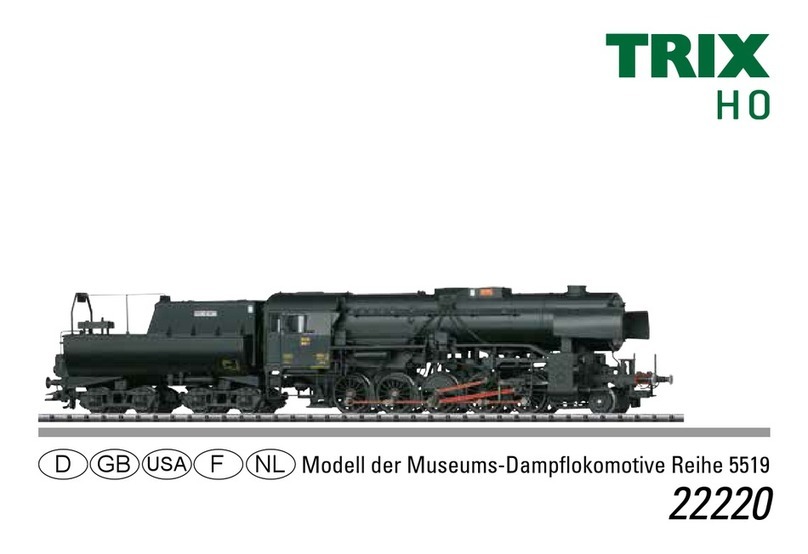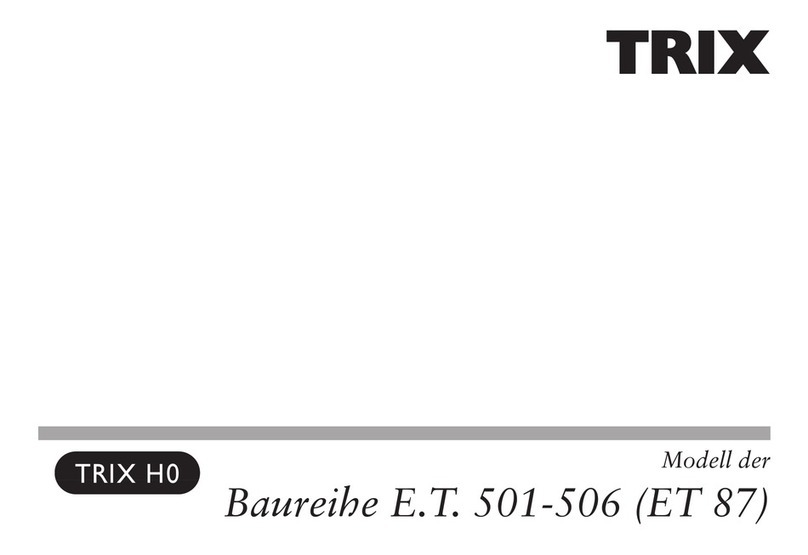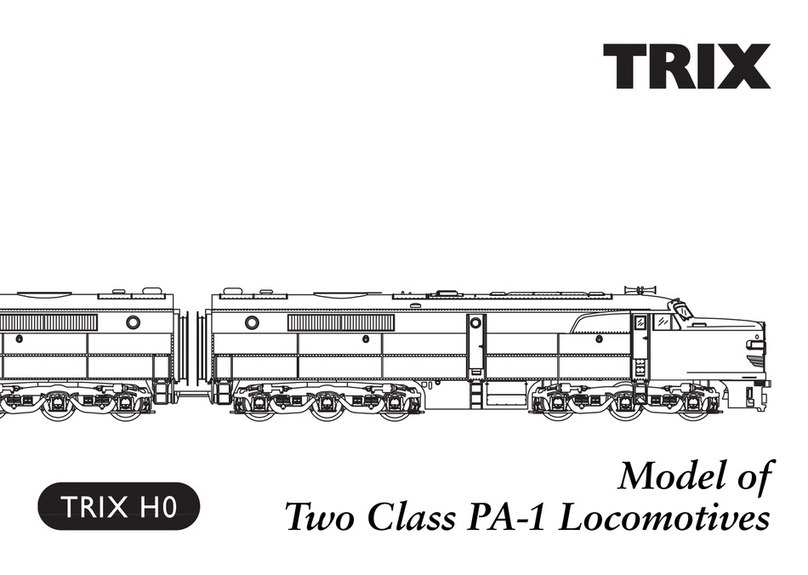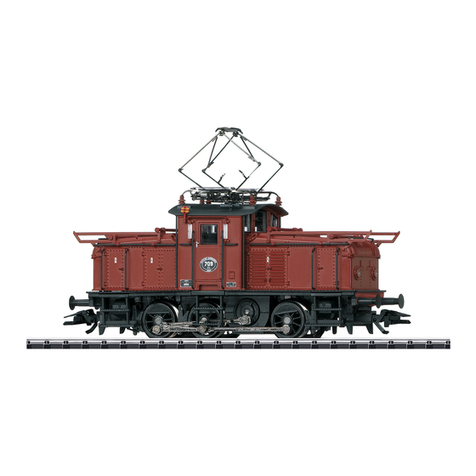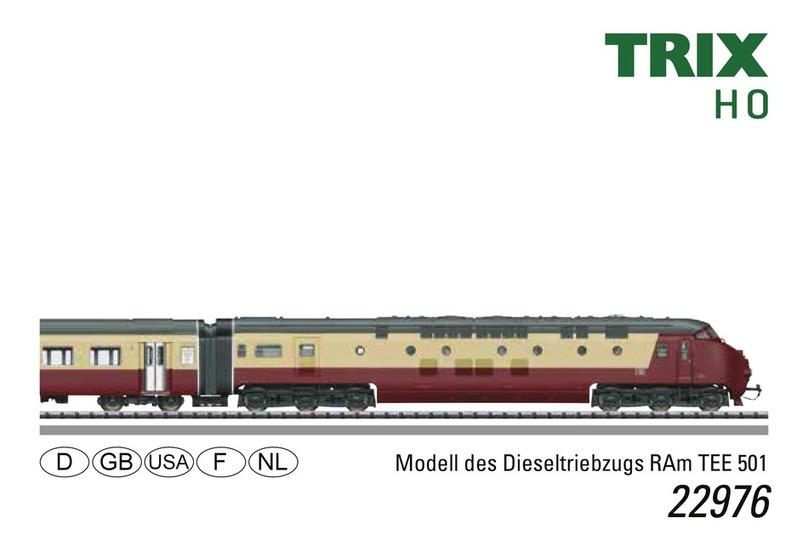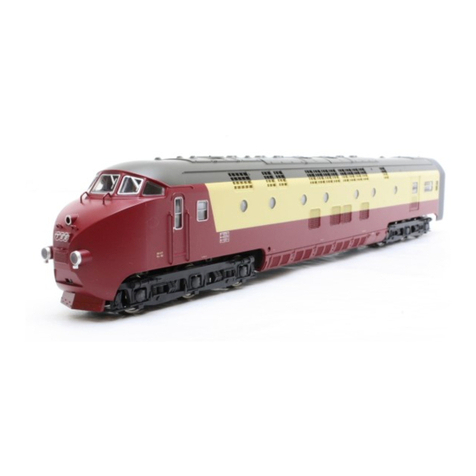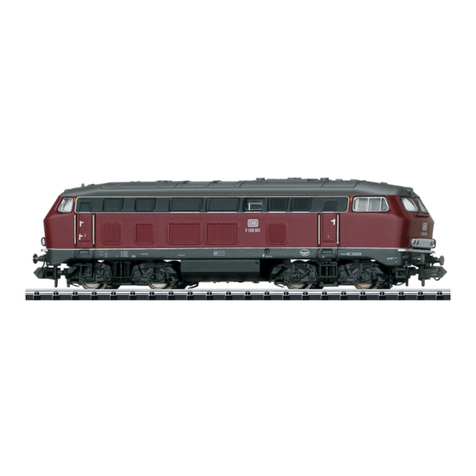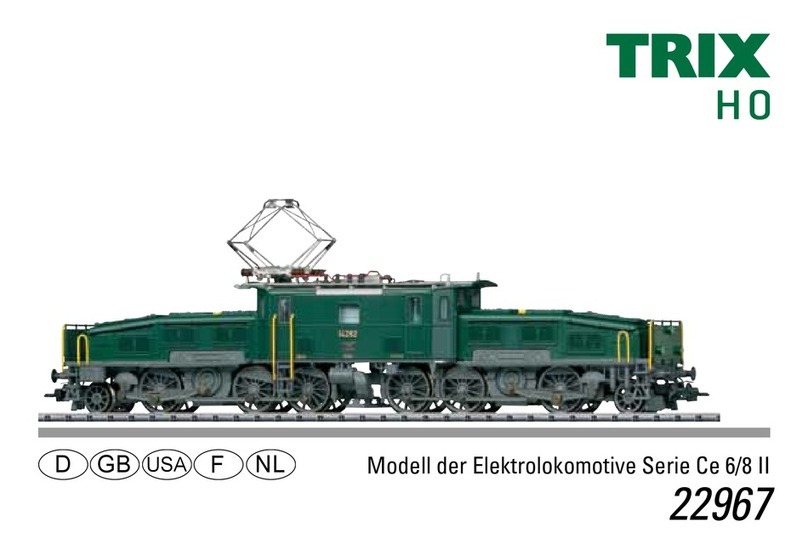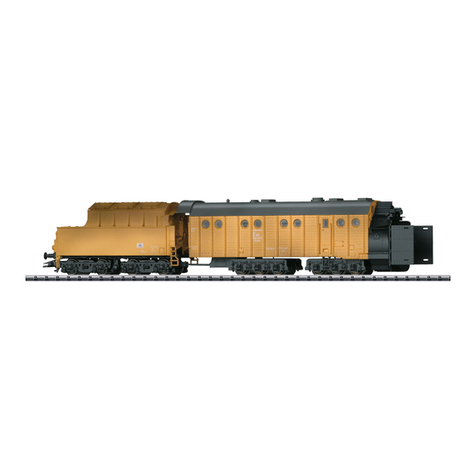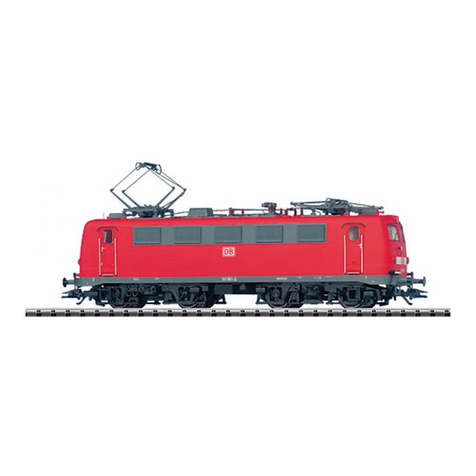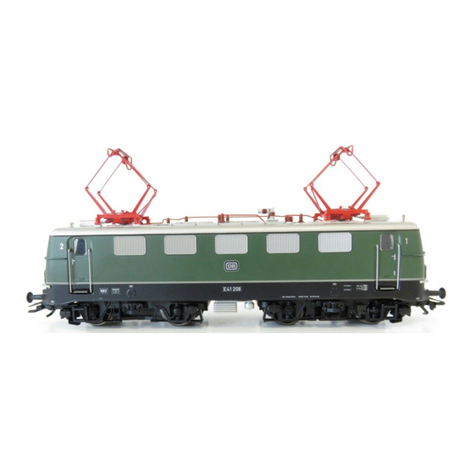
6
Die extrem große Lokomotive stellt besondere Anforderun-
gen an Ihre Modellbahnanlage. Prüfen Sie vor der ersten
Fahrt die folgenden Punkte, um Beschädigungen an der Lok
oder an der Anlage zu vermeiden:
• DerbefahrbareMindestradiusist360mm.Wirempfehlen
jedoch, möglichst größere Gleisradien (> 500 mm) zu
wählen.
• DasLichtraumproldieserLokomotiveistbreiterund
höher als die für europäische Modellbahnen vorgege-
benen Profile. Bitte beachten Sie dies, z.B. bei Signalen,
Weichen, Masten, Tunneln etc.
Cette locomotive extrêmement grosse pose des exigences
particulières à votre réseau ferroviaire réduit. Pour éviter
tout endommagement de la locomotive ou de l’installation,
vérifiez les points suivants avant la première mise en route:
• Lerayonminimumdedéplacementestde360mm.Nous
recommandons cependant de choisir, si possible, des
rayons de voie plus importants (> 500 mm).
•
Le gabarit de libre passage de cette locomotive est plus large
et plus haut que les gabarits recommandés pour les trains
miniatures européens. Veuillez en tenir compte par exemple
pour les signaux, aiguillages, mâts, tunnels, etc.
De extreem grote locomotief stelt bijzondere eisen aan uw
modelbaan. Controleer voorafgaand aan de eerste rit de
volgende punten, om beschadigingen aan de loc of de baan
te voorkomen:
• Deberijdbareminimumradiusbedraagt360mm.Wij
adviseren echter, de railradiussen zo groot mogelijk (>
500 mm) te kiezen.
• Het“proelvanvrijeruimte”voordezelocomotiefis
breder en hoger als het norm profiel voor de Europese
modelbaan. Let daar a.u.b. op bij bijv. seinen, wissels,
masten tunnels e.d.
The extremely large locomotive places particular demands
on your model railway system. Before operating for the first
time, please check the following points in order to avoid
damage to the locomotive or your system:
• Theusableminimumradiusis360mm.However,we
recommend that you select greater radii if at all possible
(> 500 mm).
• Theclearanceproleforthislocomotiveiswiderand
higher than the profiles prescribed for European model
railroading. Please bear this in mind for signals, turnouts,
masts, tunnels, etc.
